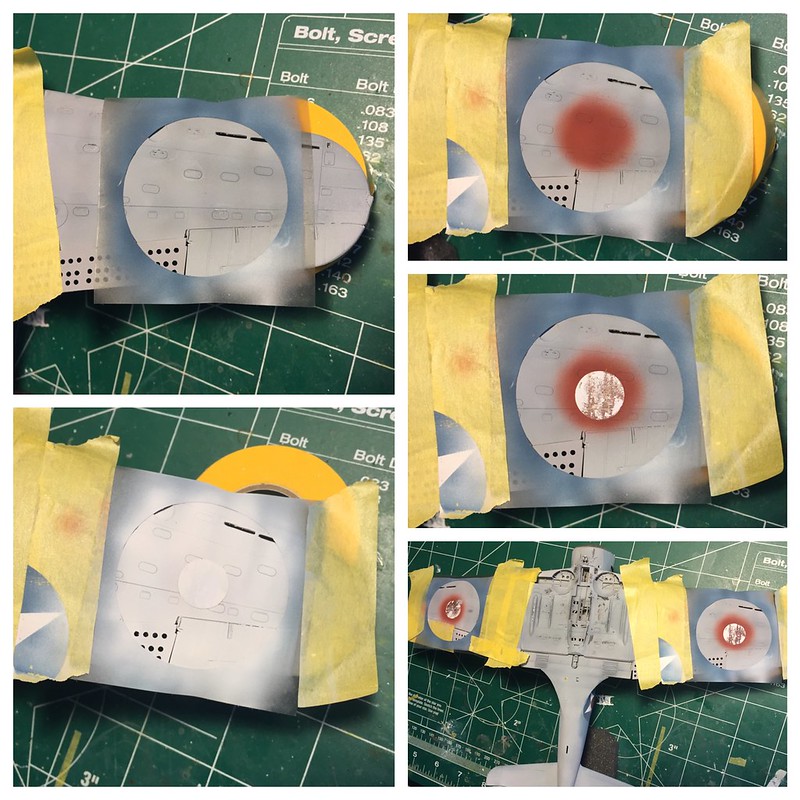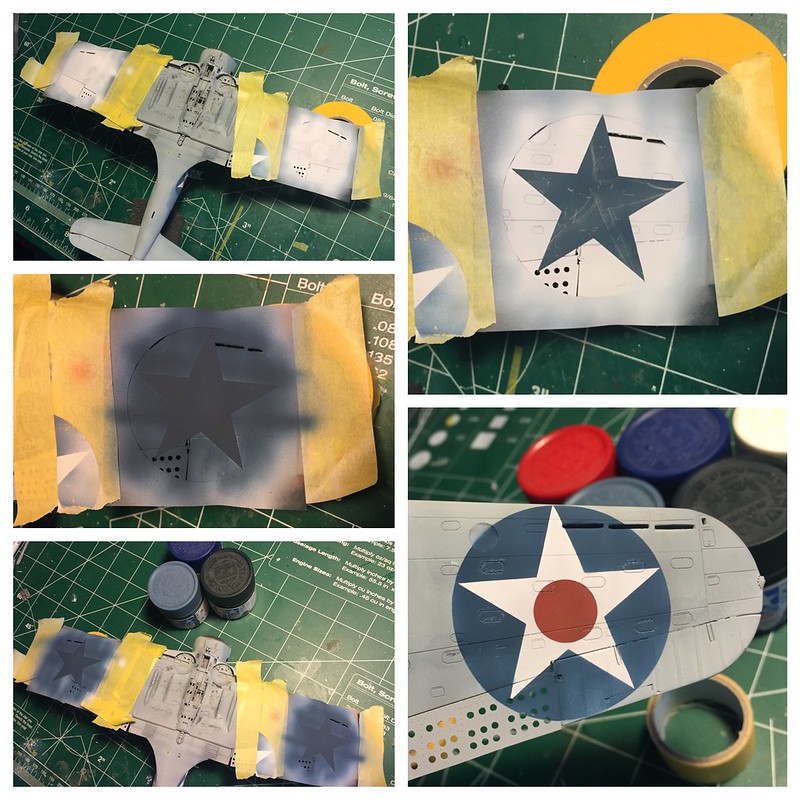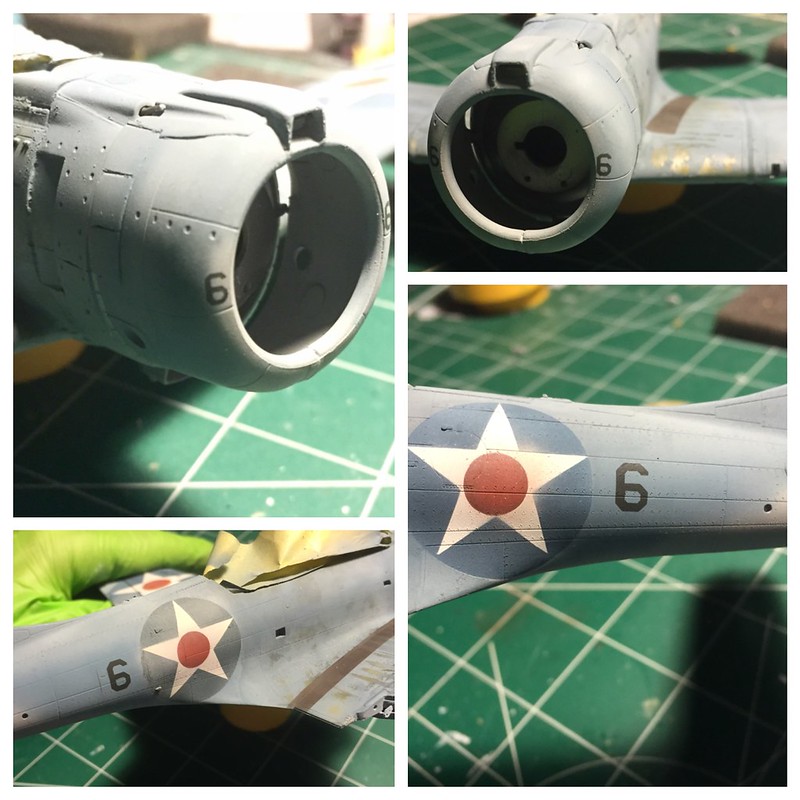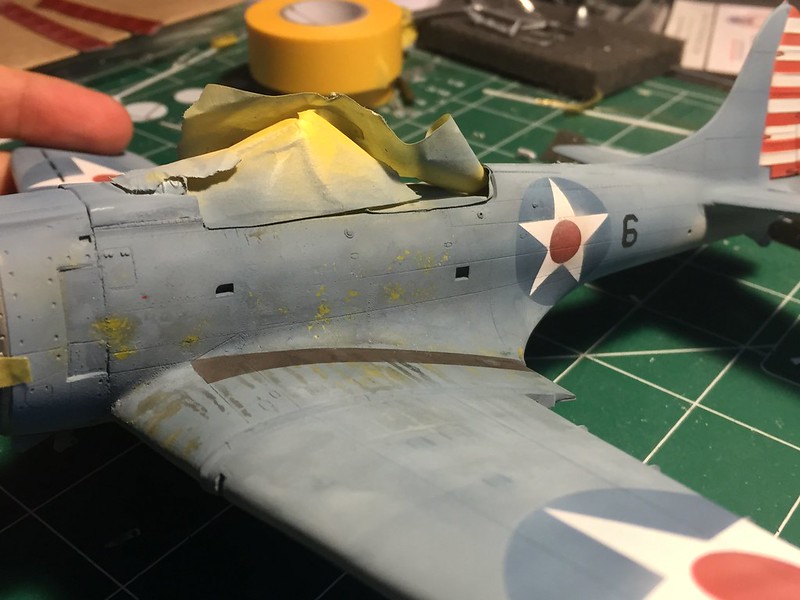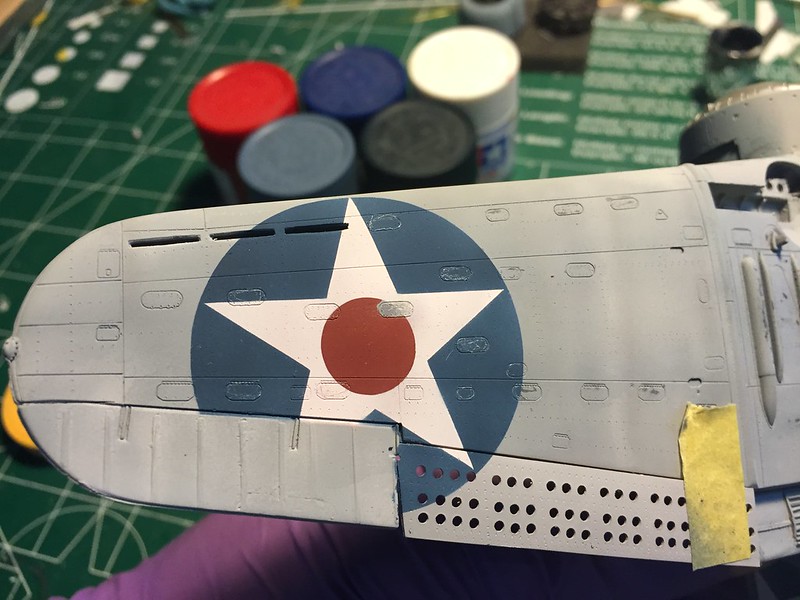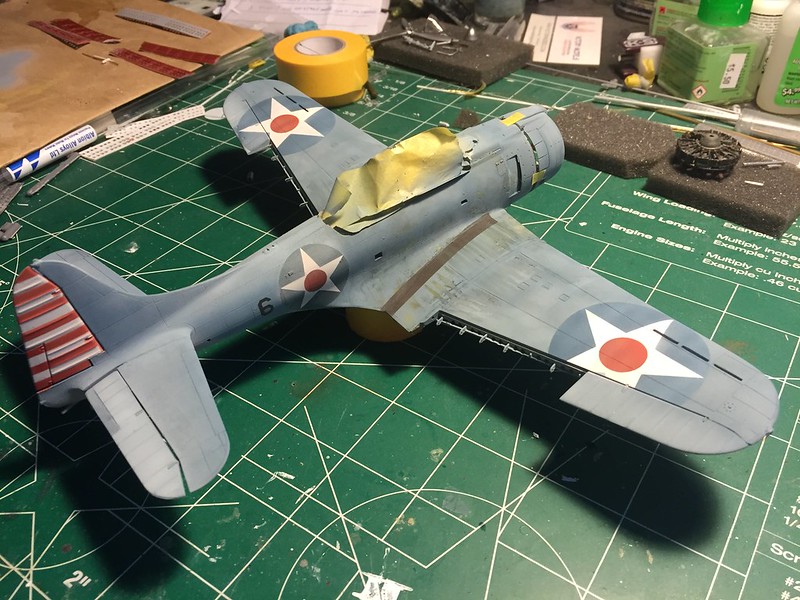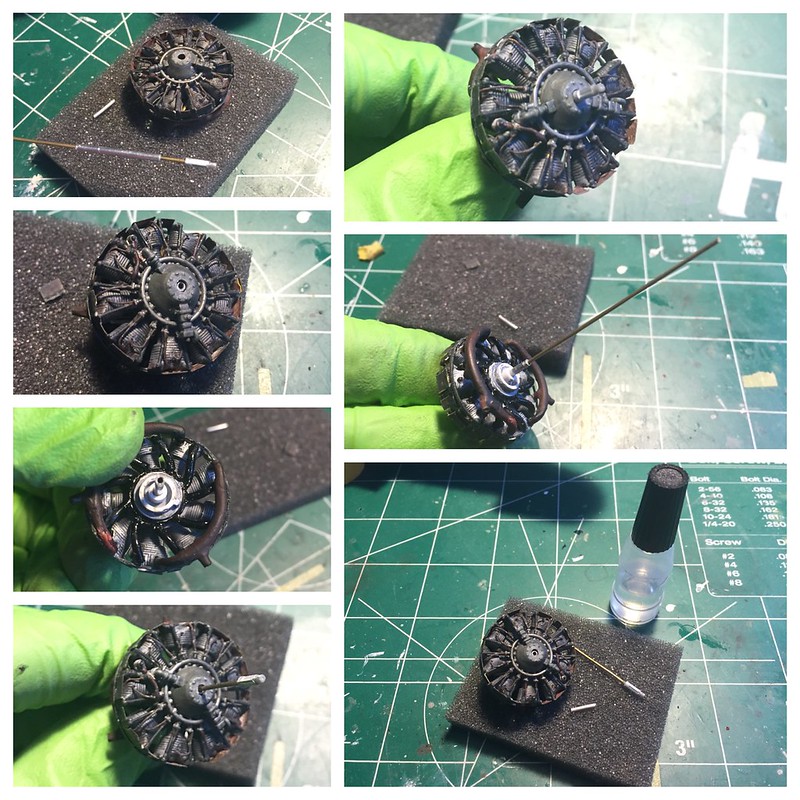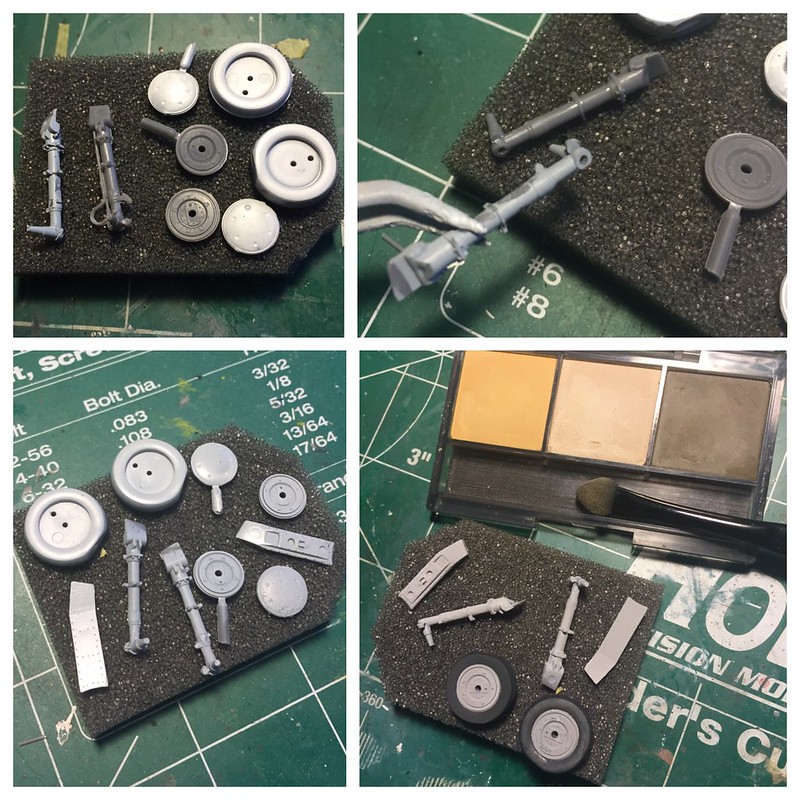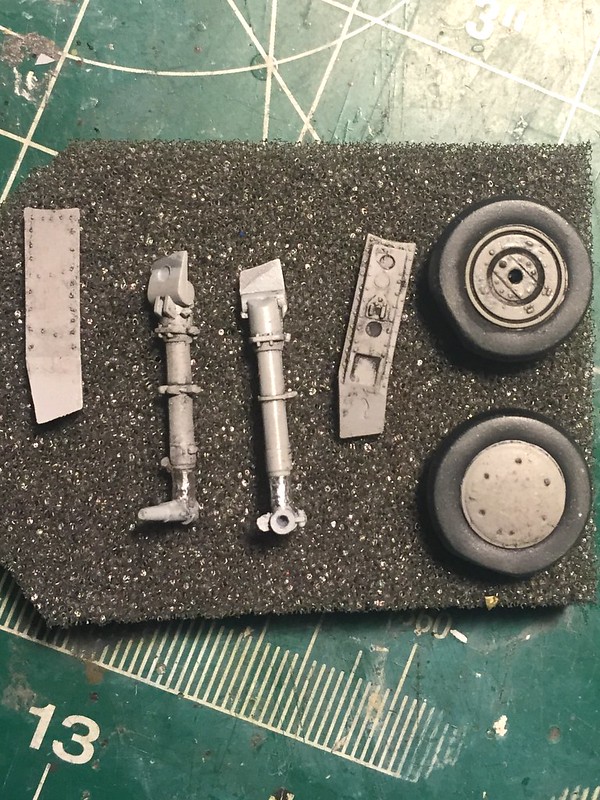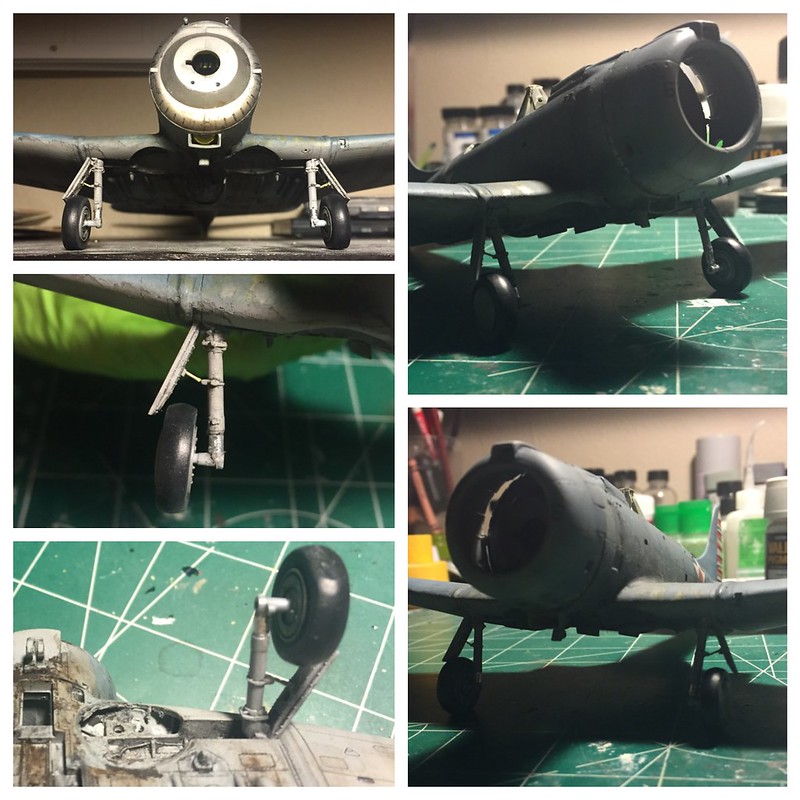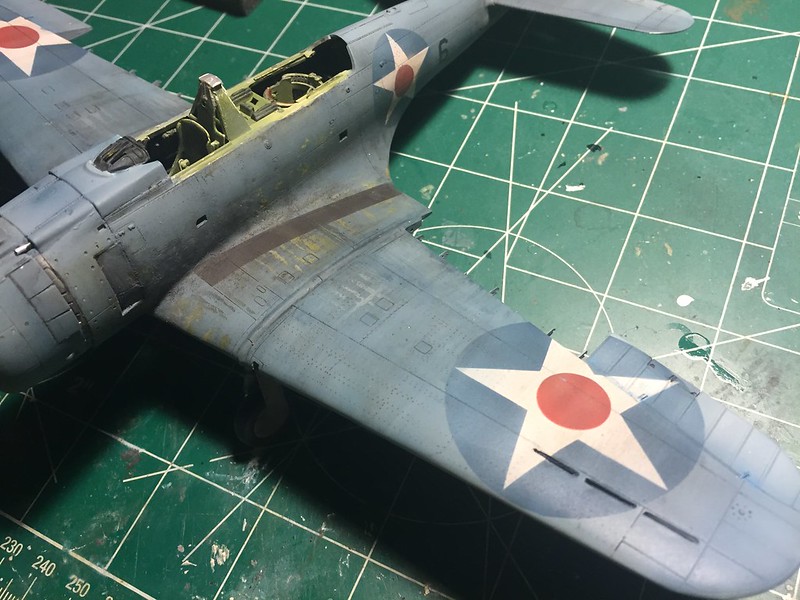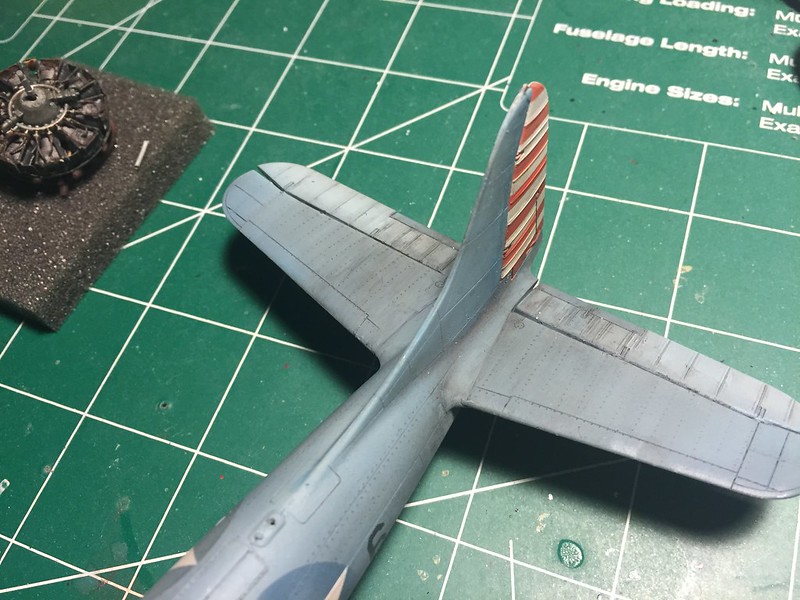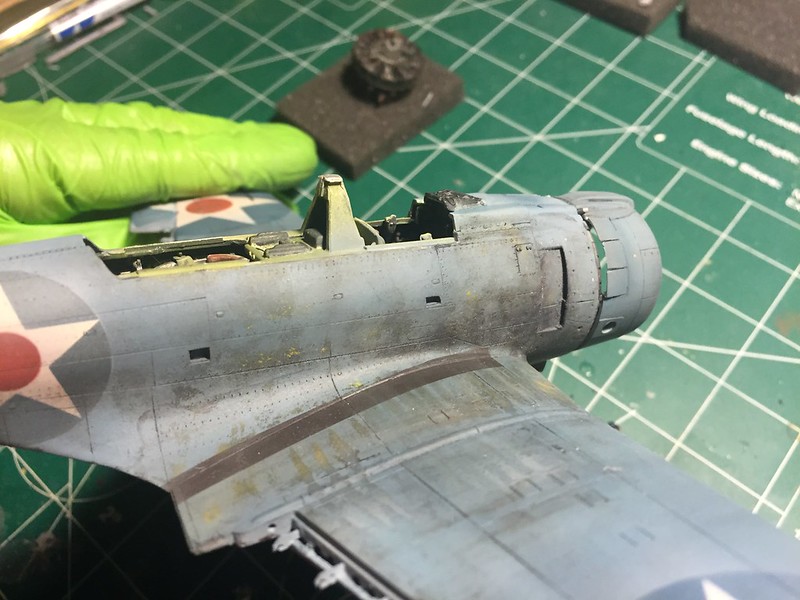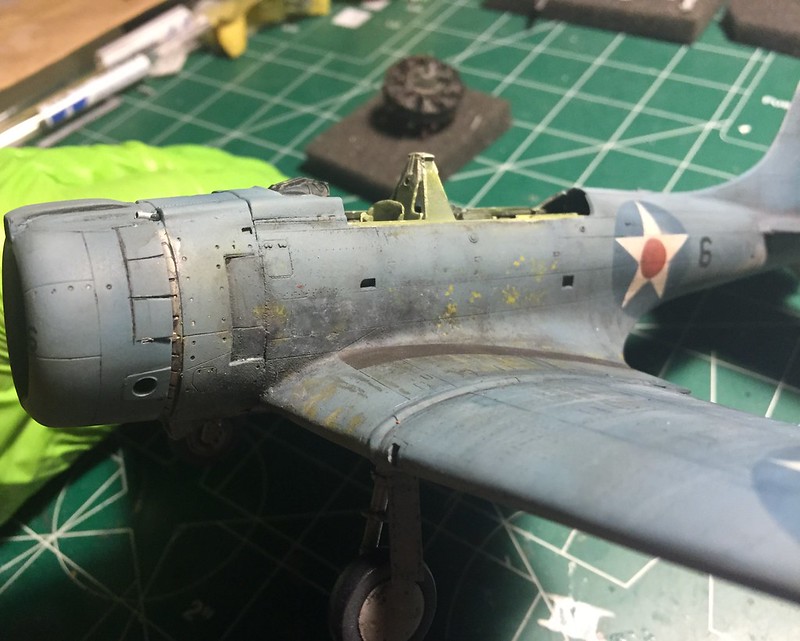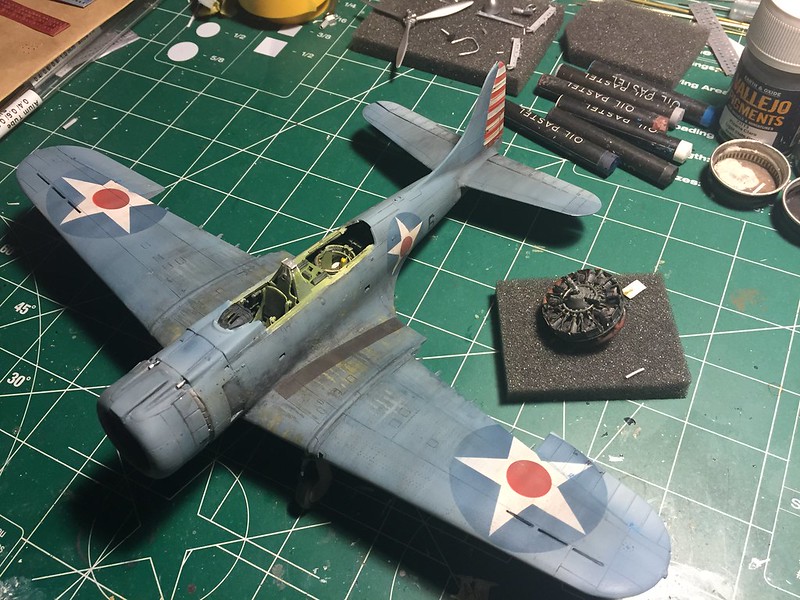Hey folks. I was originally going to for-go a WIP this time around and just post a pic at the finish line, but there are some key changes I made to the Academy kit (originally Accurate Minatures) that I wanted to share and then they’re were some more…and then some more…so I figured I’d make it a WIP post anyhow and be less hasty about it.
So here we go.
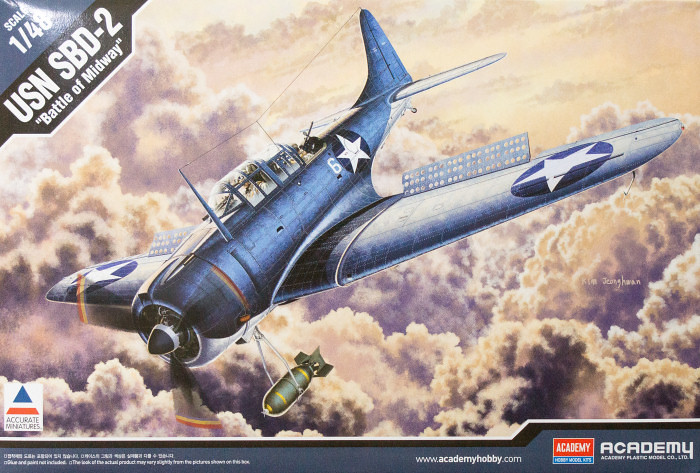 aca_12296_title by Britt Vallot, on Flickr
aca_12296_title by Britt Vallot, on Flickr
I decided on an SBD Dauntless flown by Lt. John J. Powers of VB-5 on the Yorktown (CV-5) who received the Medal of Honor in the Battle of Coral Sea. Over the 4 days of fighting, he destroyed two large enemy gun boats, severely damaged an aircraft tender and a 20,000 ton transport ship and sunk carrier Shoho and helped with putting Shokaku out of the fight for Midway. He advocated a low release drop while divebombing to ensure a hit. The night before his death he was quoted as saying, “Remember the folks back home are counting on us. I am going to get a hit if I have to lay it on their flight deck.” He knew full well the danger of such tactics and stressed caution to his other pilots. In a September of 1942 radio address, FDR spoke at length about Powers and had this to add:
“He led [his squadron] down to the target from an altitude of 18,000 feet, through a wall of bursting anti-aircraft shells and swarms of enemy planes. He dived almost to the very deck of the enemy carrier, and did not release his bomb until he was sure of a direct hit. He was last seen attempting recovery from his dive at the extremely low altitude of two hundred feet, amid a terrific barrage of shell and bomb fragments, smoke, flame and debris from the stricken vessel. His own plane was destroyed by the explosion of his own bomb. But he had made good his promise to 'lay it on the flight deck.” (Wiki)
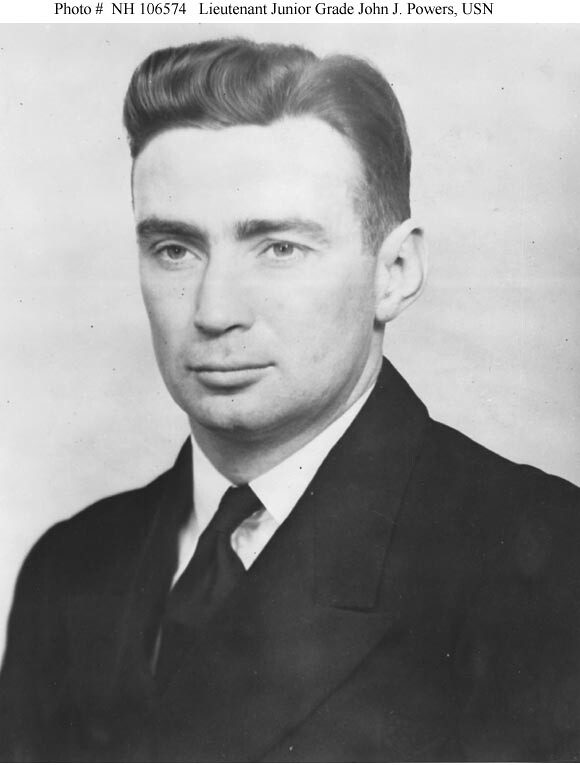 i06574 by Britt Vallot, on Flickr
i06574 by Britt Vallot, on Flickr
John James Powers was reguarded as a natural leader and a gutsy pilot. So I was happy to build this plane. Unfortunately, there don’t seem to be any photos of his plane which may be why you don’t see it represented by any of the SBD kit manufactuers. I suppose he was too busy fighting a war to stop and smile for a picture. All of the weathering that you’ll see is based on typical wear and tear of SBDs from that time period and the number is guessed at as well. Only one other SBD was lost from VB-5 in that battle which was Black 16 (Ens Davis Chaffee and Seaman 1st ClassJohn Kasselman), so I’ve ruled that out. The number was based on squadron formations and his ranking within his group as Squadron Gunnery Officer.
Getting started with the cockpit…pretty usual stuff really…all OOB. I wish I had better pictures of some of this.
 Untitled by Britt Vallot, on Flickr
Untitled by Britt Vallot, on Flickr
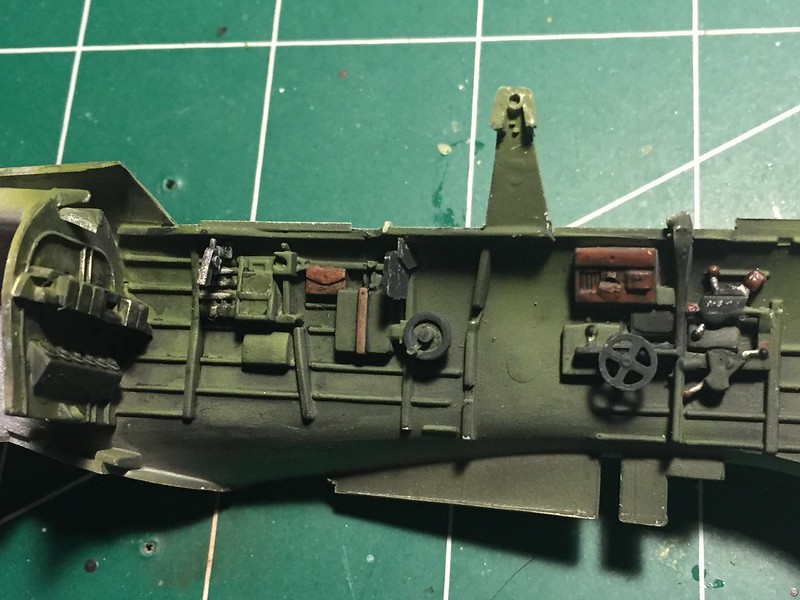 Untitled by Britt Vallot, on Flickr
Untitled by Britt Vallot, on Flickr
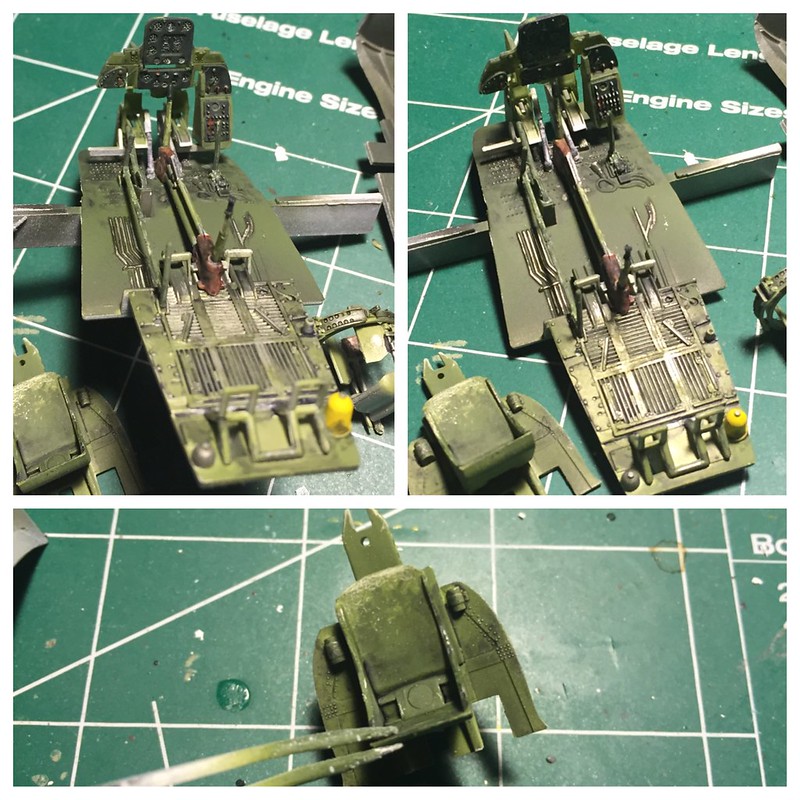 Untitled by Britt Vallot, on Flickr
Untitled by Britt Vallot, on Flickr
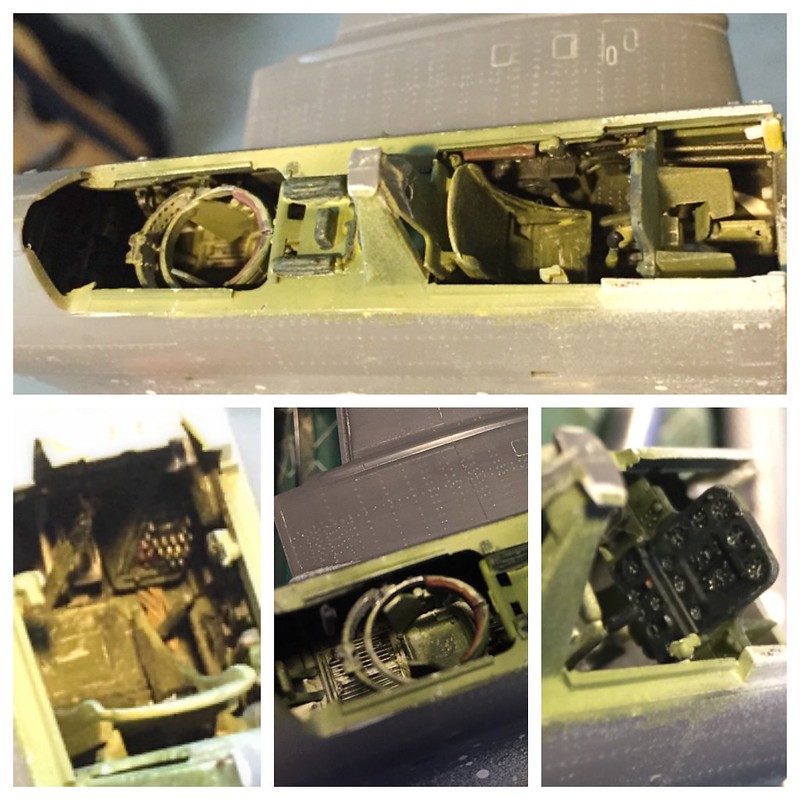 Untitled by Britt Vallot, on Flickr
Untitled by Britt Vallot, on Flickr
The engine was from the kit and dressed up with some brass rod and fine brass wire. The kit part for the wiring harness is way out of scale. Way too thick. Just like Lawdog in his tutorial, I too snipped the wiring off the kit part and started from there. I drilled a very tiny hole on the front of each cylinder head as well as the top for ignition cables. It also helped to sink the wires as well. Plastic stip (square .5mm) makes up the ring around the engine and the air deflectors are scratched from thin brass sheet. The carb intake on the engine cowl was a little chewed up coming off the sprue. I fixed it up with a little bit of Milliput to take care of it and bring it back to shape. I also inserted the vent that is visible just inside the intake as well…just a sliver of plastic strip. The two lengths of aluminum tube you see are various inlets that are present on the engine between cylinders 4 and 5, and 6 and 7. (I forget the name of them at the moment). The intake door for the oil cooler was thinned down to scale also.
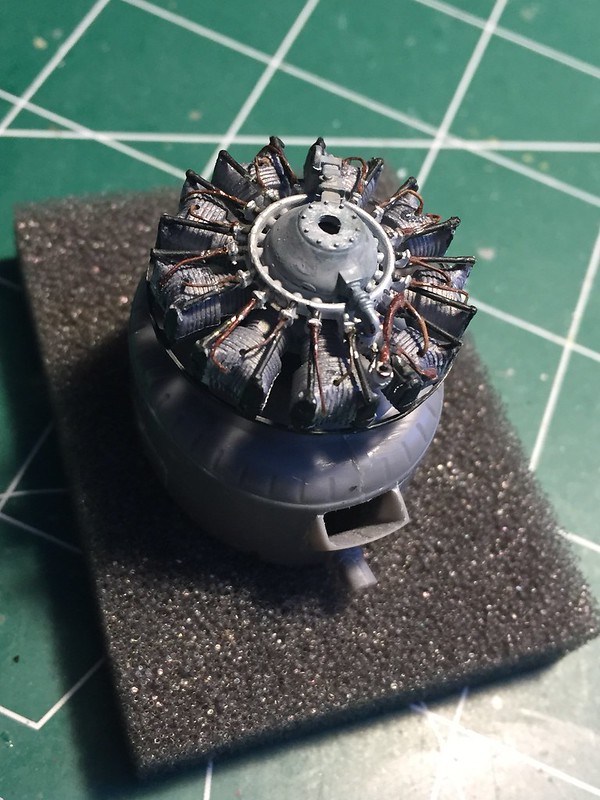 Untitled by Britt Vallot, on Flickr
Untitled by Britt Vallot, on Flickr
 Untitled by Britt Vallot, on Flickr
Untitled by Britt Vallot, on Flickr
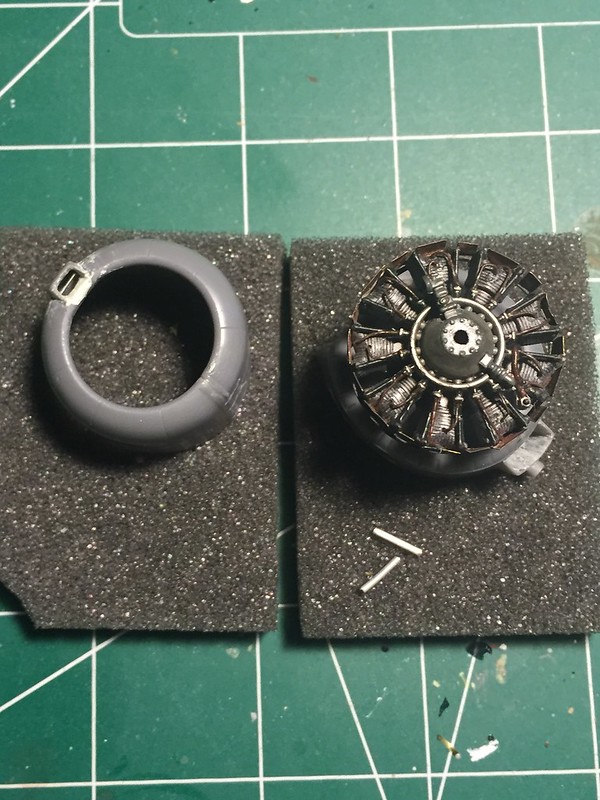 Untitled by Britt Vallot, on Flickr
Untitled by Britt Vallot, on Flickr
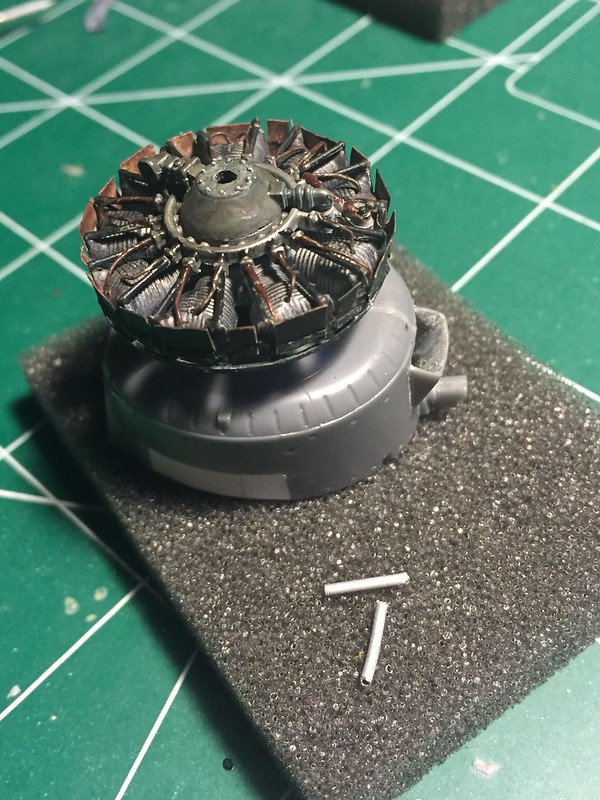 Untitled by Britt Vallot, on Flickr
Untitled by Britt Vallot, on Flickr
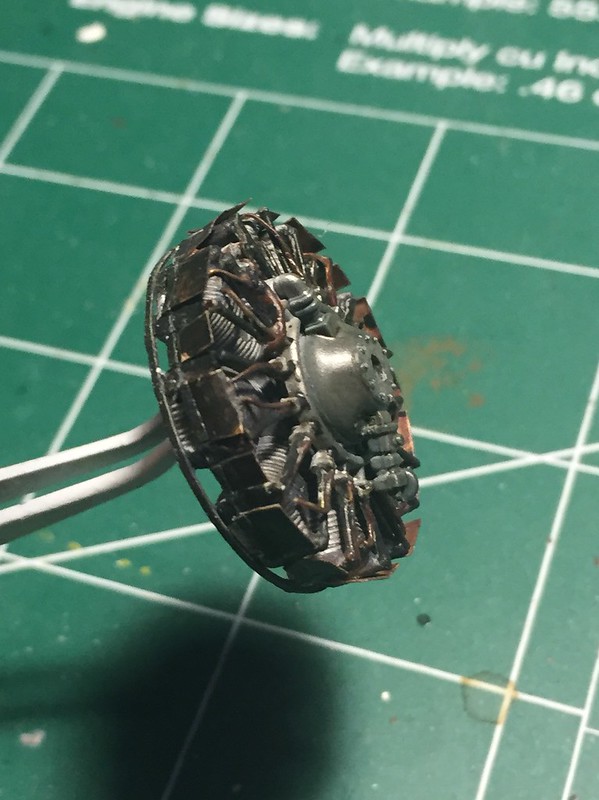 Untitled by Britt Vallot, on Flickr
Untitled by Britt Vallot, on Flickr
I decided to open up the engine vents which are molded closed up. Didn’t really get what I wanted so I cut them off and built up my own with plastic sheet. Now doing this can allow one to peak inside a bit which now causes me to have to put something that ought to be seen in its place. =] I wanted to keep it simple and opted to settle for just the engine mounts. I also built up a little spot to attach them.
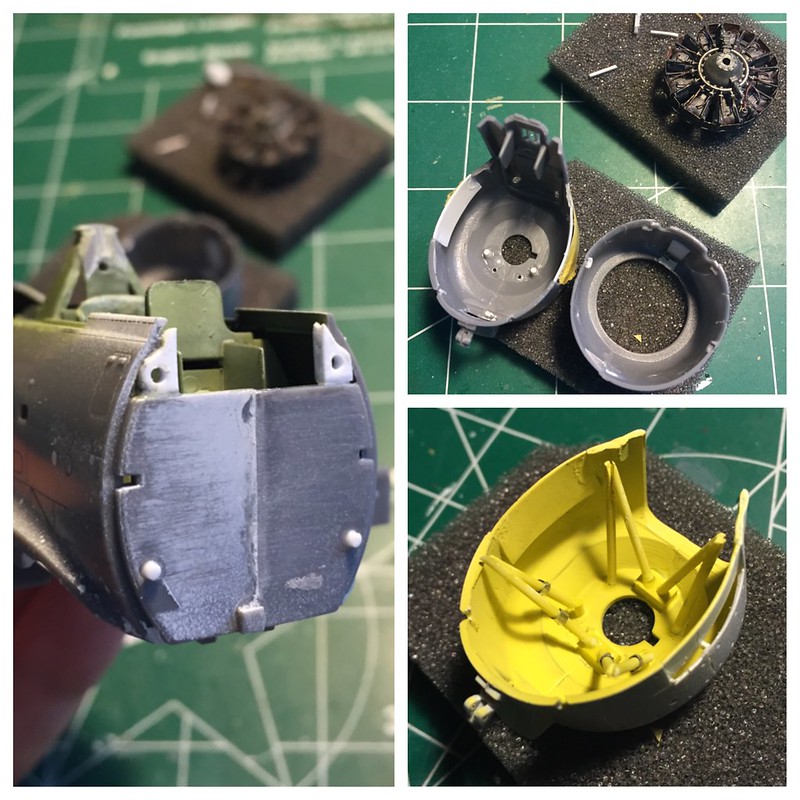 Untitled by Britt Vallot, on Flickr
Untitled by Britt Vallot, on Flickr
The real pain in the butt was completely self-inflicted. I wanted to try my hand at soldering an exhaust manifold together because it would go mostly unseen. Any mistakes I made would be easily hidden if necessary. I looked hard to find accurate pictures of the exhaust set up for this engine series and this was the best I came up with. It wasn’t quite as difficult as I thought it’d be, but I definitely made it harder on myself than I needed to. All the same, here it is. I’m fairly pleased with it. It’s worth the effort if you ever would like to try it.
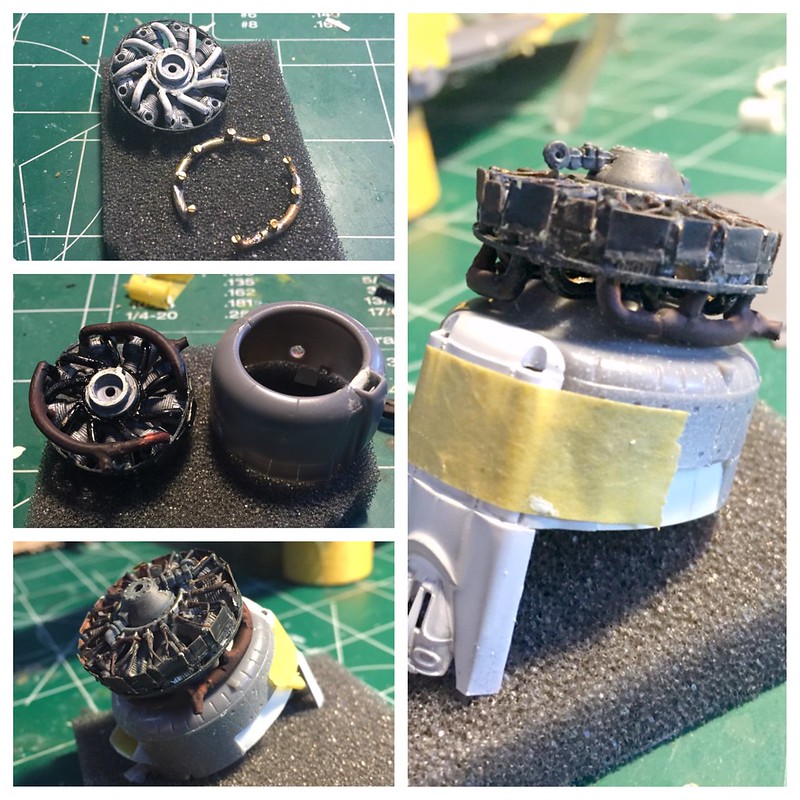 Untitled by Britt Vallot, on Flickr
Untitled by Britt Vallot, on Flickr
I also added the oil cooler as the intake for it will be open. The kit parts are kind of sad looking here so I made my own. Not so difficult. I hope to find more pics of this.
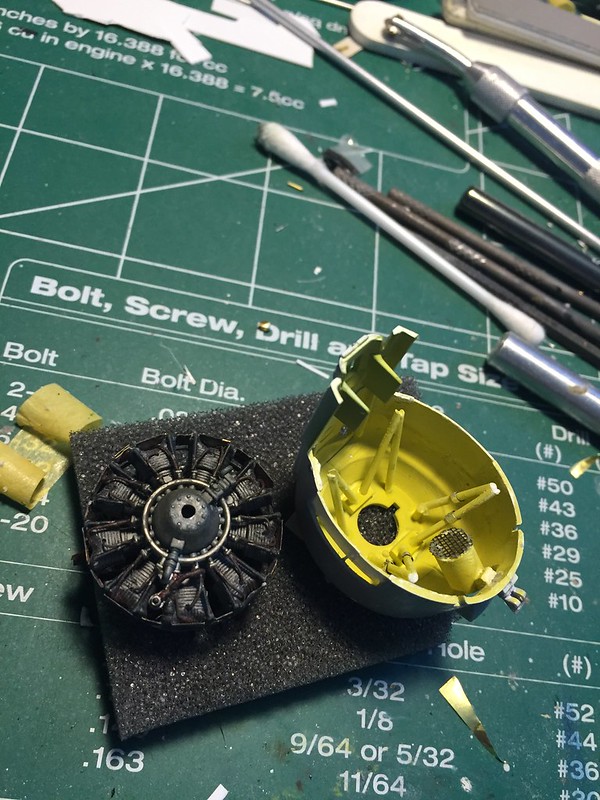 Untitled by Britt Vallot, on Flickr
Untitled by Britt Vallot, on Flickr
At this stage, I took a moment to try something I’ve been thinking about with regard to formation lights. I drilled out the lights and replaced them with pulled clear sprue. I sanded them down and polished them off and masked them for painting. =] Worked out rather well.
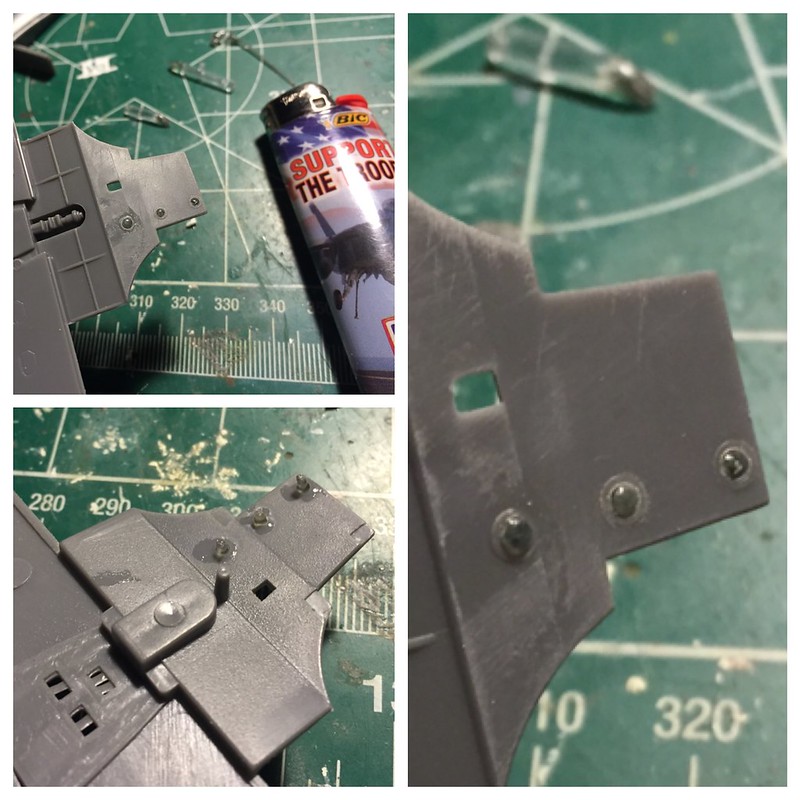 Untitled by Britt Vallot, on Flickr
Untitled by Britt Vallot, on Flickr
One thing worth noting is I discovered that the Academy kit has molded a trim tab on the right aileron. This does not belong. There was only a left trim tab. Both elevator trims are correct. I blanked out the right aileron and built back up the ribbing only to discover that the bottom ailerons are molded incorrectly also. There are 8 ribs that make up the ailerons and 7 are shown on the bottom. Not sure how they missed that one, but no matter. I sanded down the incorrect ribs and replaced them with thin plastic strips. I also riveted the surface of the plane. =]
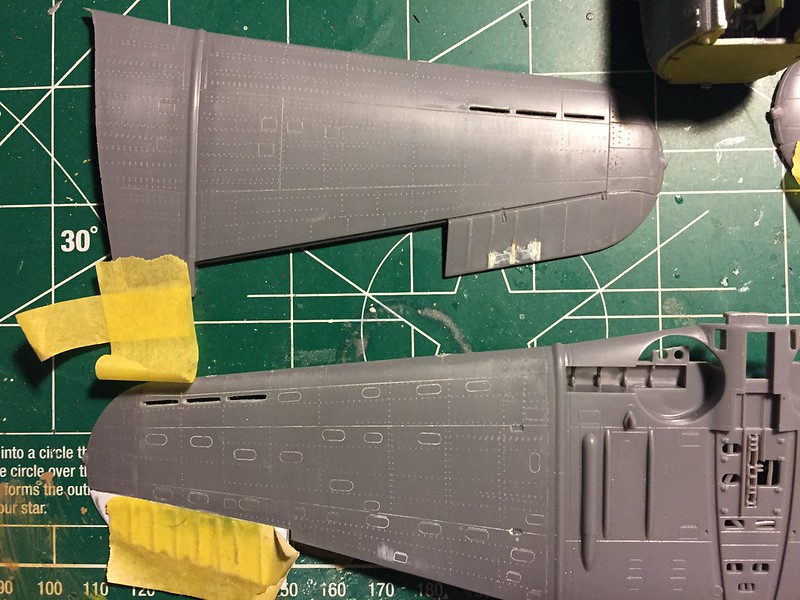 Untitled by Britt Vallot, on Flickr
Untitled by Britt Vallot, on Flickr
 Untitled by Britt Vallot, on Flickr
Untitled by Britt Vallot, on Flickr
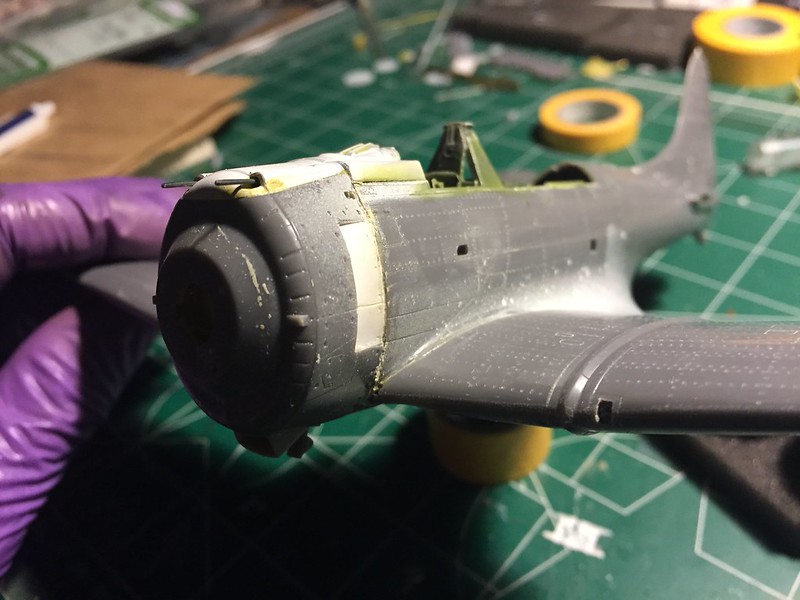 Untitled by Britt Vallot, on Flickr
Untitled by Britt Vallot, on Flickr
I also opened up the vents within the wings. I built up the walls between each vent and I’m a little frustrated that I don’t have a picture of this somehow. I know I took plenty. I took a little extra time sanding the ribs to get them to conform to the molded interior of the wing. I bent some plastic sheet into a curve and eye-balled it into place for both the top and bottom. Easier than you think…just be patient. This part really goes a long way to improve your build if you can make the time for it. I’ve also cut the elevators to set them as I’ve seen most parked. A brass rod holds them in place and acts as the actuating rod. Not really necessary though. I often do the same to the rudder but it depends on the kit. This one was molded with deep enough dimensions that it doesn’t bother me.
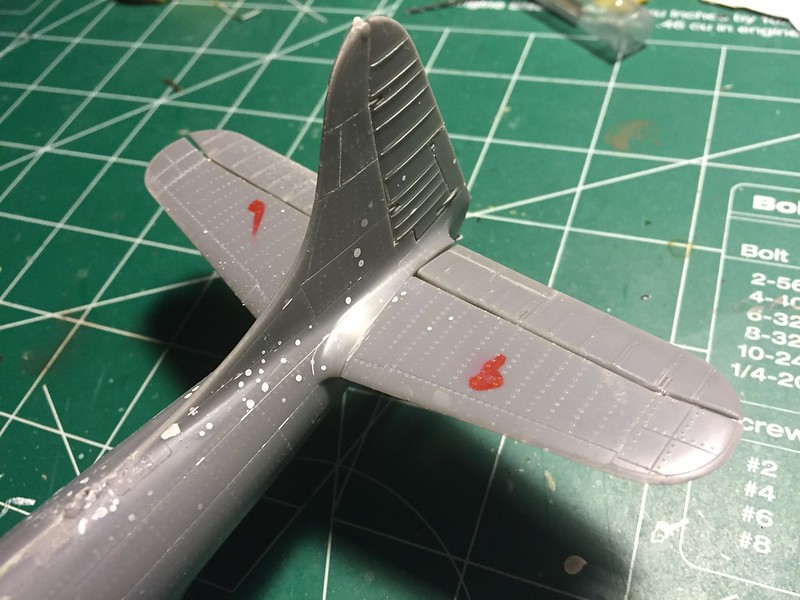 Untitled by Britt Vallot, on Flickr
Untitled by Britt Vallot, on Flickr
I tried Alclad’s Grey Primer for the first time. I added a little extra laquer thinner to keep it moving and it worked beautifully.
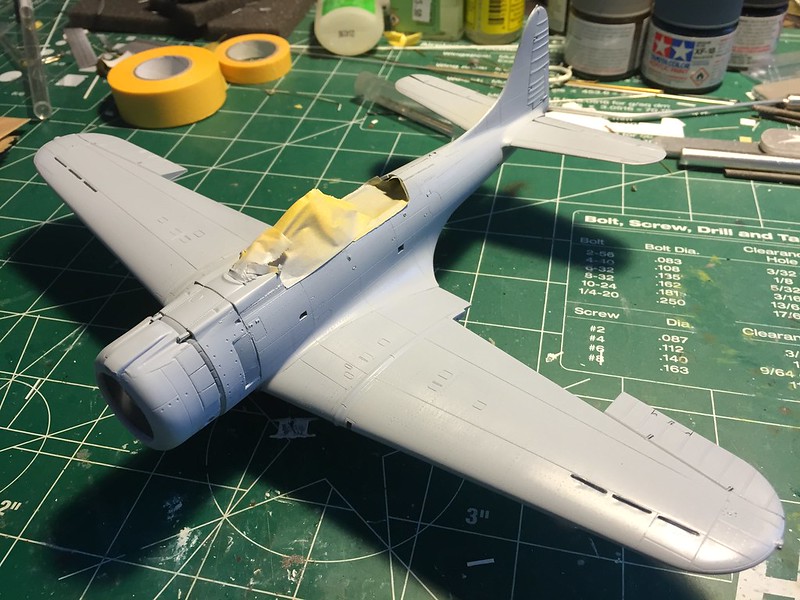 Untitled by Britt Vallot, on Flickr
Untitled by Britt Vallot, on Flickr
Next came the weathering. I’ve been on the hunt for a better method of revealing chipped paint. In all honesty, things like “the hairspray method” sound a little intimidating to me because I’m afraid I’ll buy the wrong kind of hairspray and ruin something completely. I know that sounds ridiculous, but hey. Well, it turns out it’s not so bad really. It’s really pretty simple. From the grey primer base, I put Alclad’s Duraluminum down first to make up the skin of the wing…then, a yellow chromate color over parts I wanted to have it show through. I carefully drug a Q-tip soaked in Isopropyl alcohol 91% to remove some of the chromate primer revealing the wing surface. For safe measure this got covered up with a clear and then a flat coat before using the hair spray. I gave it three good quick coats leaving about 10 seconds in between each pass. Worked wonderfully. Save your money guys. This is buy far the best way I’ve tried yet. Weather as much or as little as you’d like. I’m now looking forward to a few Zeros I can beat to hell!! =D
 Untitled by Britt Vallot, on Flickr
Untitled by Britt Vallot, on Flickr
 Untitled by Britt Vallot, on Flickr
Untitled by Britt Vallot, on Flickr
Before moving on from here, I had to address the flap assembly. In my previous build I scratched out my own flaps for a P-40B…not too difficult it turns out. But this is the Dauntless…perforated flaps!! Not to worry. I wasn’t completely happy with the kit parts (even though they’re adequate) but they can still be useful. ![]() I cut out my shapes for each of the flaps and taped the kit piece to the new thinner scratched piece. With a pin vise drill, I carefully drilled out each hole making sure not to let the kit part torque and turn on top. Worked rather well. The kit parts are accurate so don’t worry about counting holes. Good lord don’t do that to yourself. They’re all there. =] Seems like a lot to fool with but once you get started…you get rolling. You’ll be done before you know it. The rods and mounting tabs were a bit cumbersome as they were so tiny, but if you have young eyes or a means of magnifying then it won’t be so bad. At this scale the two parts won’t really show up so I opted for a single thin piece and placed them in the tab hole already provided (thanks AccuMin). I’ll go into more detail on constrution of the flap assembly later in the build where I’ll break down each step for any that are willing to try it own their own as well.
I cut out my shapes for each of the flaps and taped the kit piece to the new thinner scratched piece. With a pin vise drill, I carefully drilled out each hole making sure not to let the kit part torque and turn on top. Worked rather well. The kit parts are accurate so don’t worry about counting holes. Good lord don’t do that to yourself. They’re all there. =] Seems like a lot to fool with but once you get started…you get rolling. You’ll be done before you know it. The rods and mounting tabs were a bit cumbersome as they were so tiny, but if you have young eyes or a means of magnifying then it won’t be so bad. At this scale the two parts won’t really show up so I opted for a single thin piece and placed them in the tab hole already provided (thanks AccuMin). I’ll go into more detail on constrution of the flap assembly later in the build where I’ll break down each step for any that are willing to try it own their own as well.
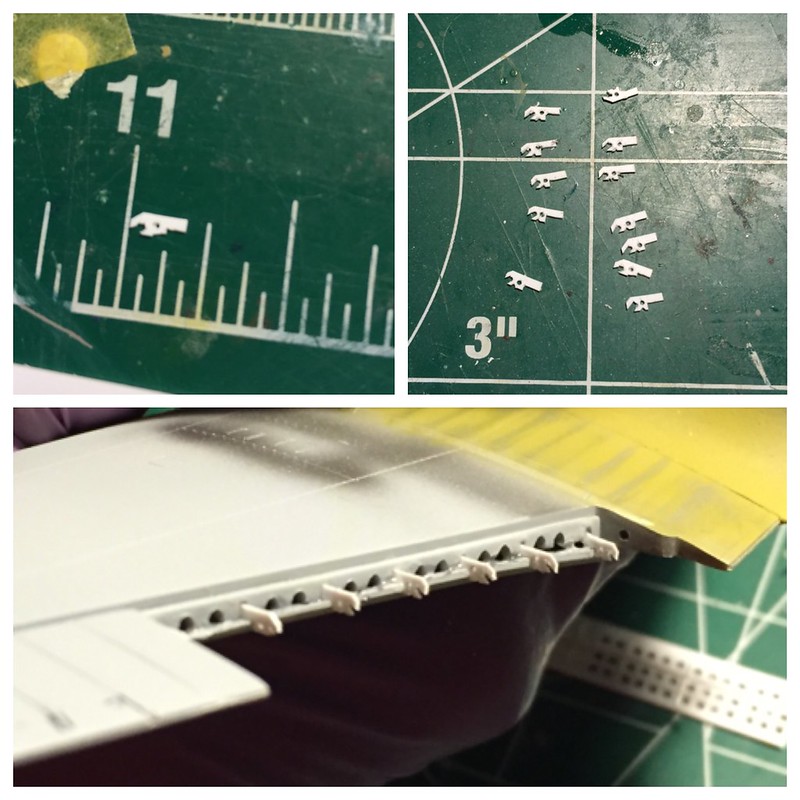 Untitled by Britt Vallot, on Flickr
Untitled by Britt Vallot, on Flickr
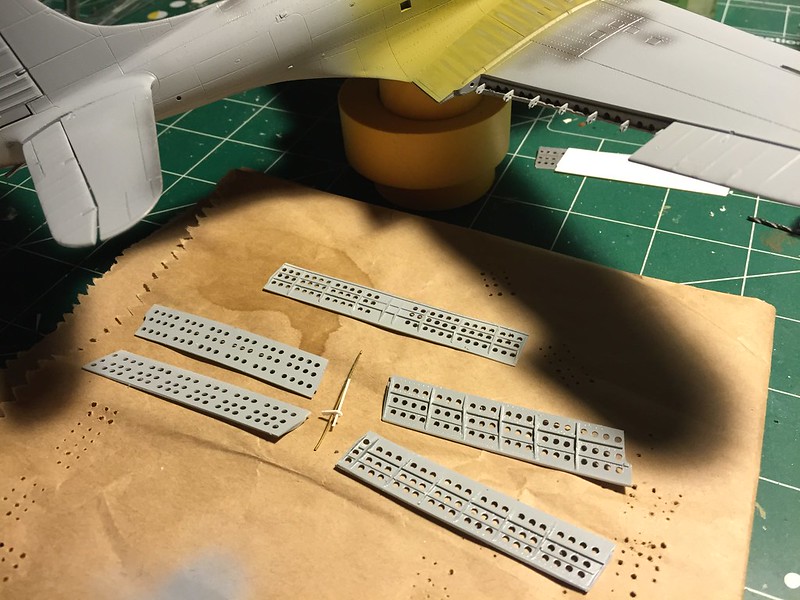 Untitled by Britt Vallot, on Flickr
Untitled by Britt Vallot, on Flickr
Here’s my obligatory first coat of paint with preshading.
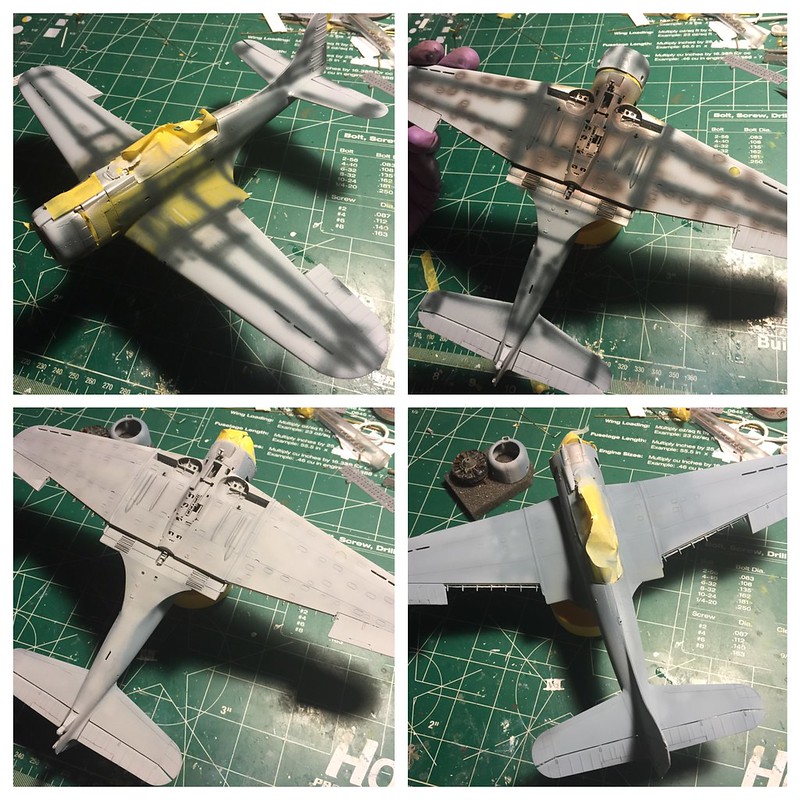 Untitled by Britt Vallot, on Flickr
Untitled by Britt Vallot, on Flickr
Here’s the beginning of the chipping. =]
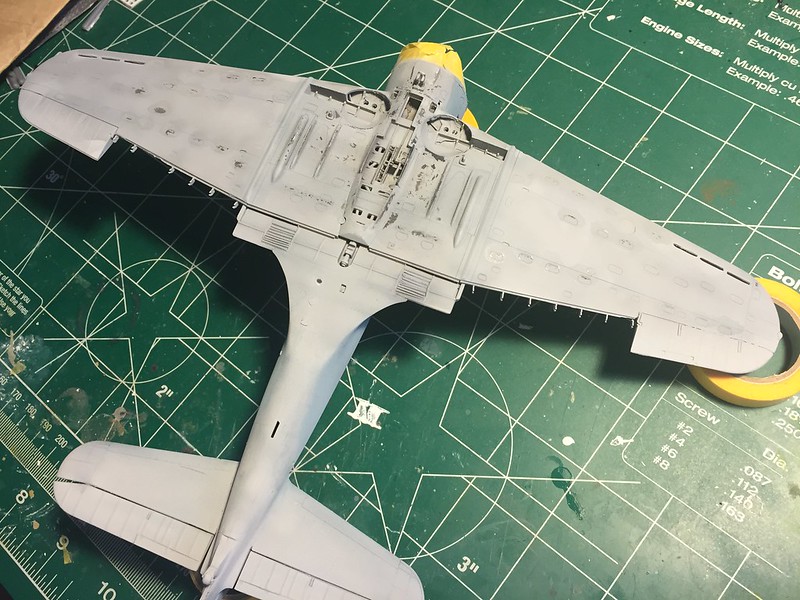 Untitled by Britt Vallot, on Flickr
Untitled by Britt Vallot, on Flickr
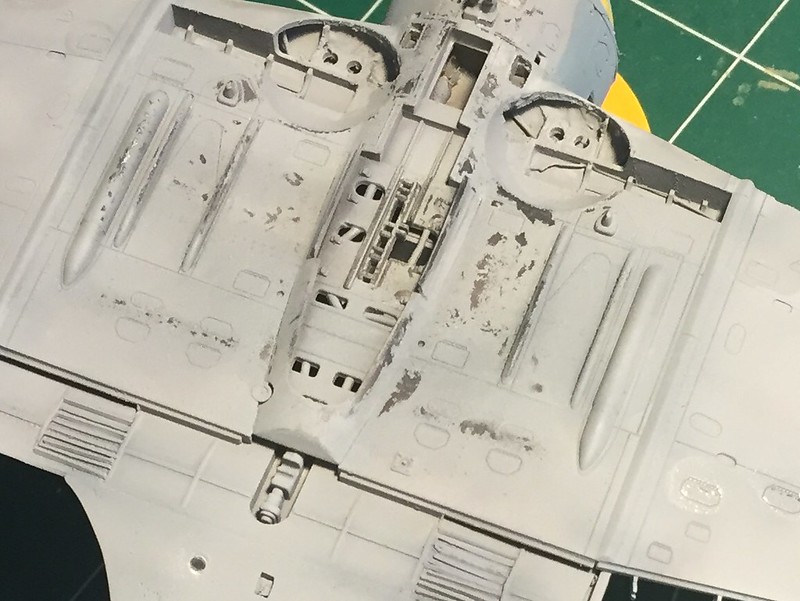 Untitled by Britt Vallot, on Flickr
Untitled by Britt Vallot, on Flickr
There’s one thing worth mentioning for the wheel bay that I haven’t gotten to address yet, and it needs to be done before painting. It seems I’ve gotten rid of this photo as well. The wheel bay for the tires to fit is a bit too squared off where the tire butts up against the top of the bay. This part of the bay should be curved a bit more than what is represented on the kit. Putty or Milliput is an easy fix to smoothing out that angle. I’ll go into more detail in the very next update when dressing this section up. =]
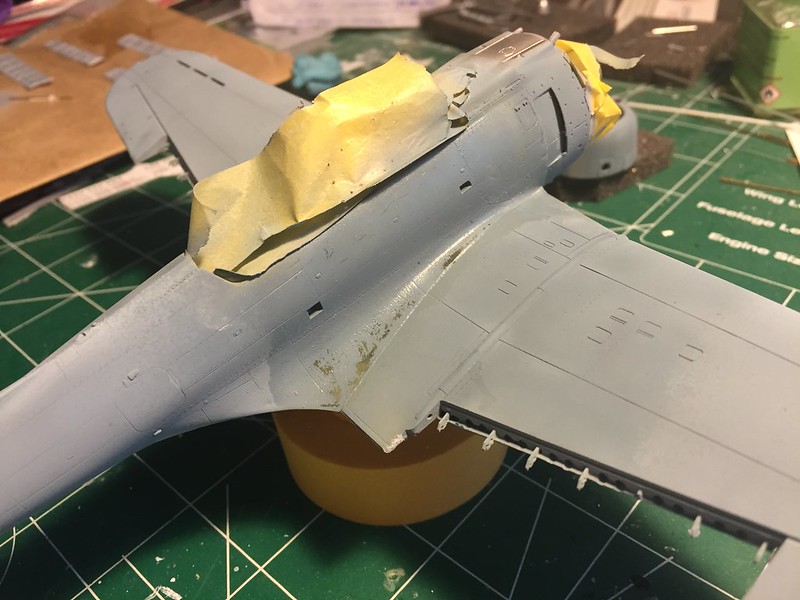 Untitled by Britt Vallot, on Flickr
Untitled by Britt Vallot, on Flickr
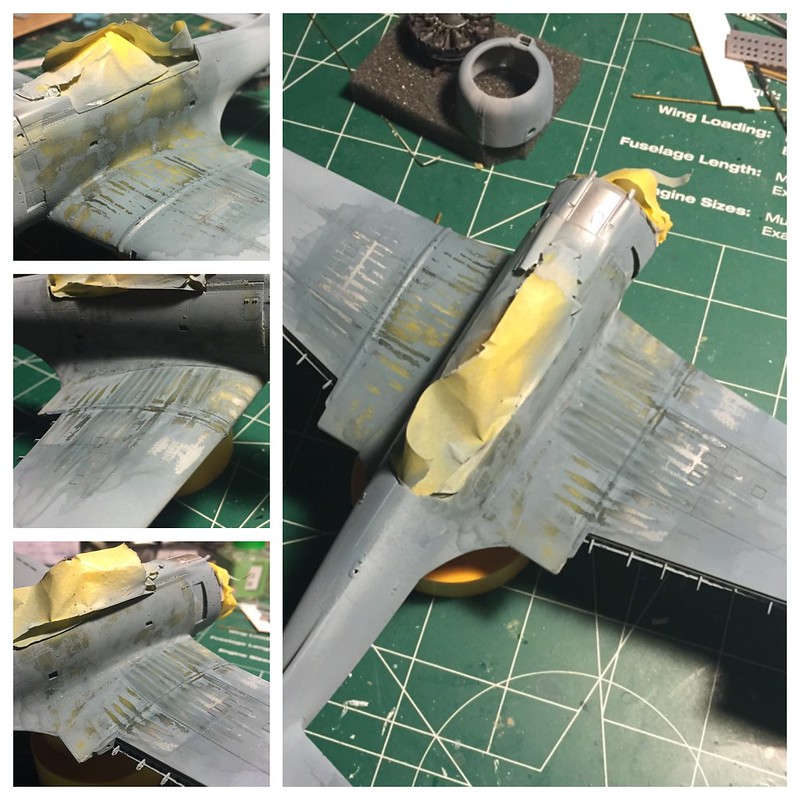 Untitled by Britt Vallot, on Flickr
Untitled by Britt Vallot, on Flickr
 Untitled by Britt Vallot, on Flickr
Untitled by Britt Vallot, on Flickr
After the chipping is complete, I went back and put a little paint back down where I felt appropriate and brought back the color to where I wanted before adding any extra weathering steps.
Next, I pulled out the Montex mask set. Makes all the difference folks! Do it. =] Went to work first on the rudder and masked everything off, painted it a dirtier white, set my strips down to cover the white stripes and put down my red coat of stripes. Easy. Let that set up and moved onto the insignia. I selected the larger insignia that went the whole length of the wing. This seemed to be more in use around the time of May 1942. Some where considerably faded…some weren’t. I went for something in the middle. To liven it up, I did make the right aileron “new” as if it’d been replaced and omitted the insignia on that section. I will tweak the red meatballs on this before moving on.
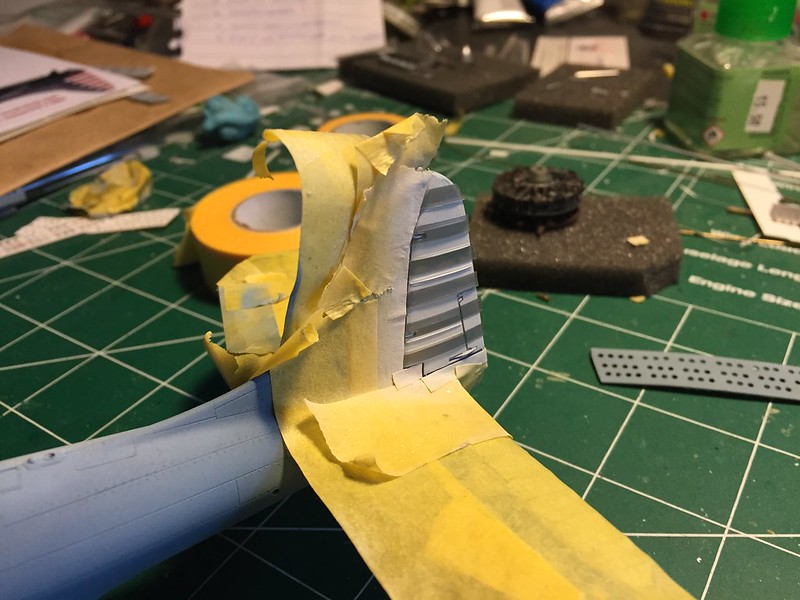 Untitled by Britt Vallot, on Flickr
Untitled by Britt Vallot, on Flickr
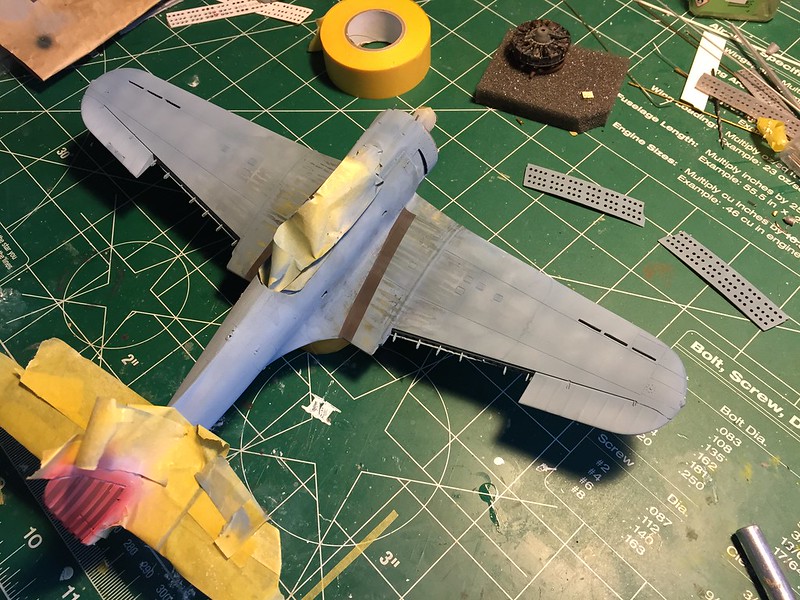 Untitled by Britt Vallot, on Flickr
Untitled by Britt Vallot, on Flickr
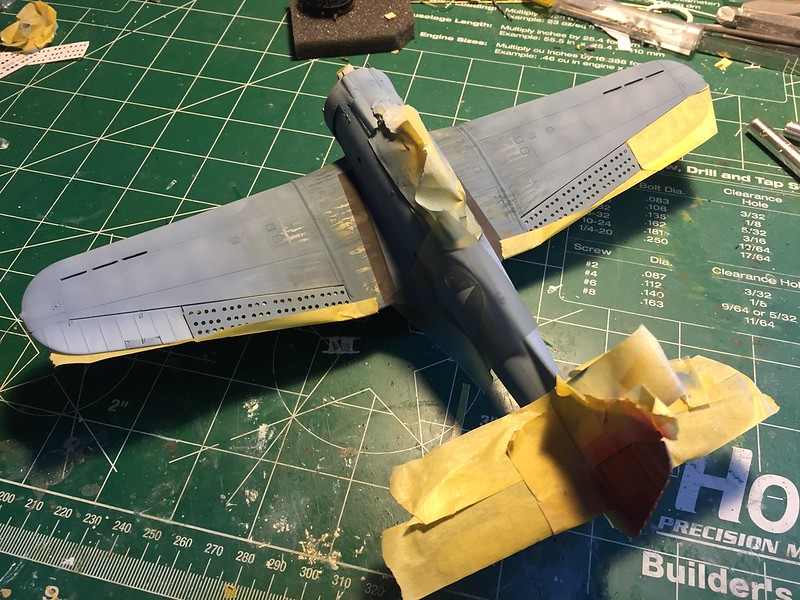 Untitled by Britt Vallot, on Flickr
Untitled by Britt Vallot, on Flickr
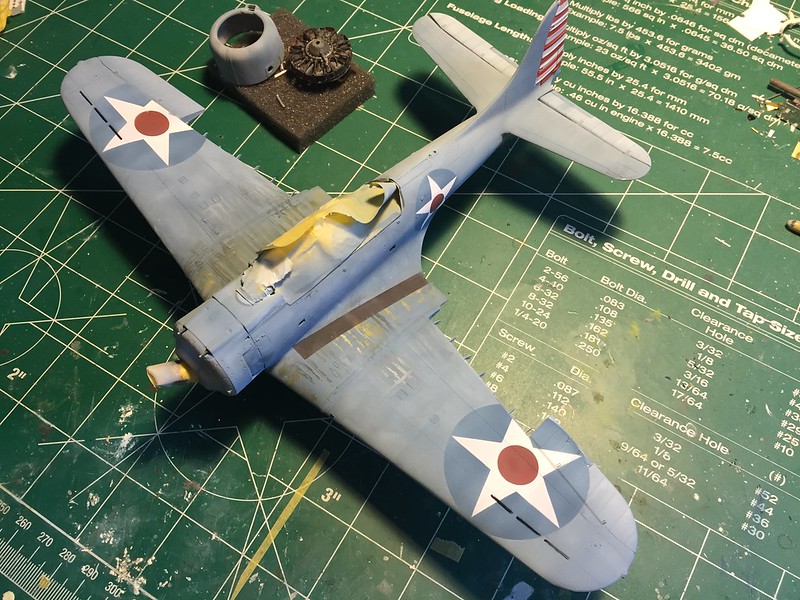 Untitled by Britt Vallot, on Flickr
Untitled by Britt Vallot, on Flickr
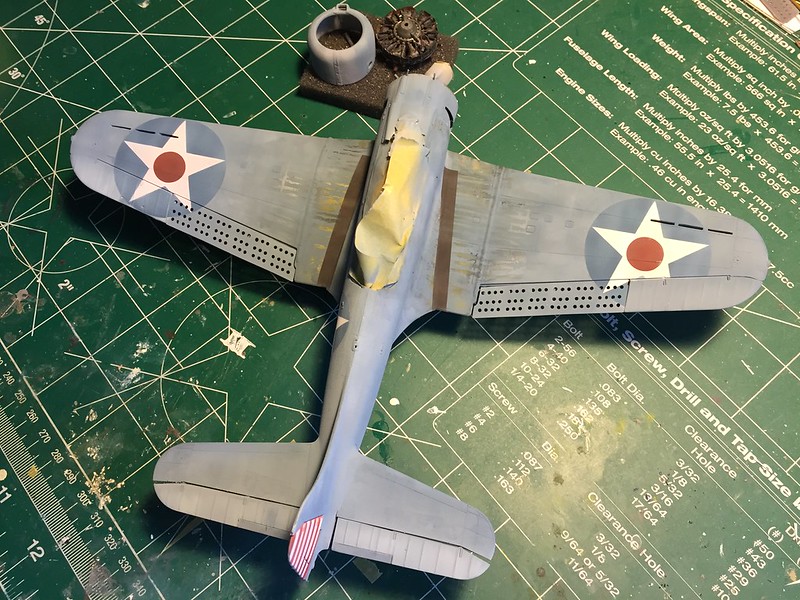 Untitled by Britt Vallot, on Flickr
Untitled by Britt Vallot, on Flickr
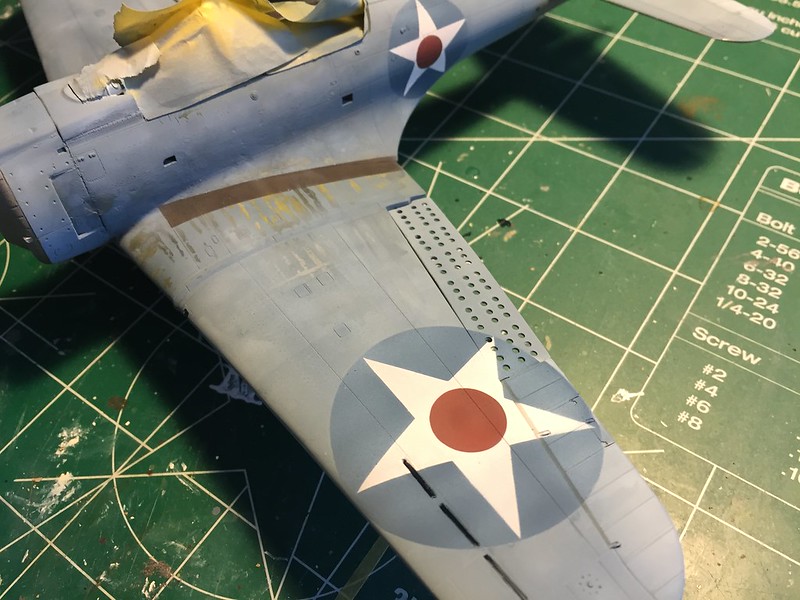 Untitled by Britt Vallot, on Flickr
Untitled by Britt Vallot, on Flickr
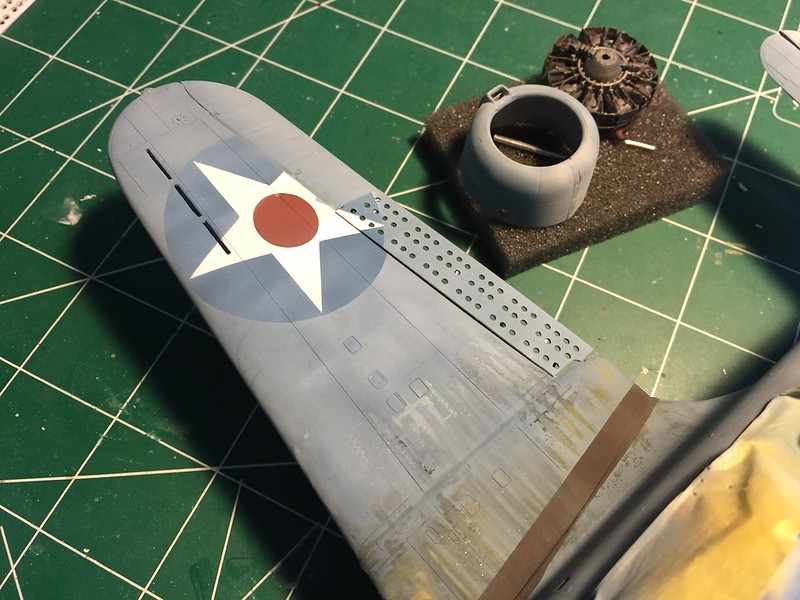 Untitled by Britt Vallot, on Flickr
Untitled by Britt Vallot, on Flickr
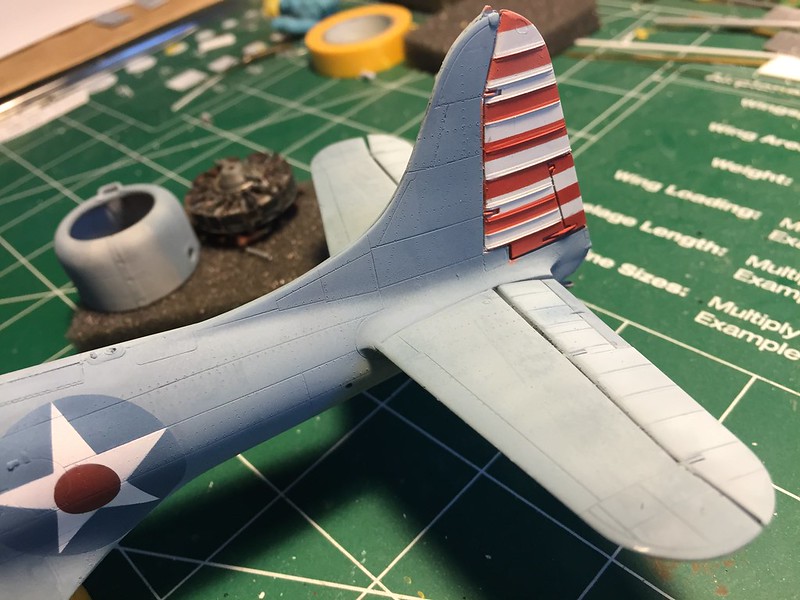 Untitled by Britt Vallot, on Flickr
Untitled by Britt Vallot, on Flickr
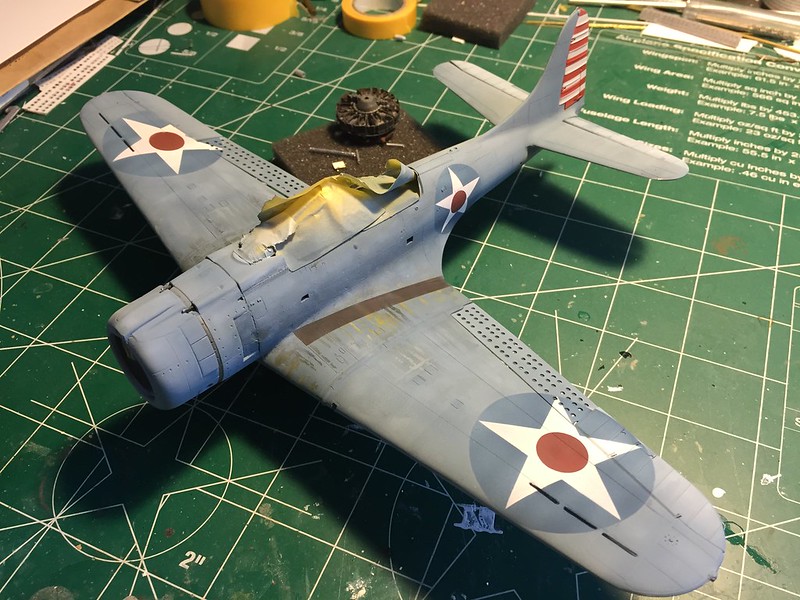 Untitled by Britt Vallot, on Flickr
Untitled by Britt Vallot, on Flickr
And that’s a wrap for now folks. I may go back and edit some parts here if I breezed over it too quickly. Any and all comments or questions are welcomed. There’s still plenty more to come to finish weathering and beating this warhorse up. =] I’m still excited about it. =]
